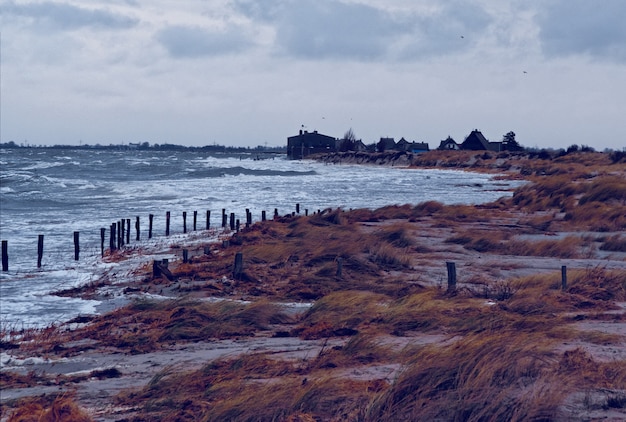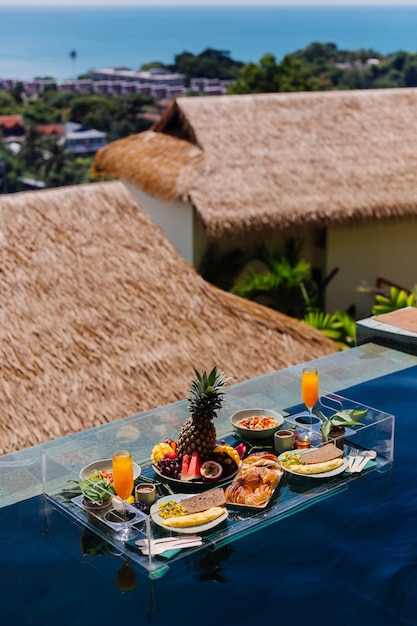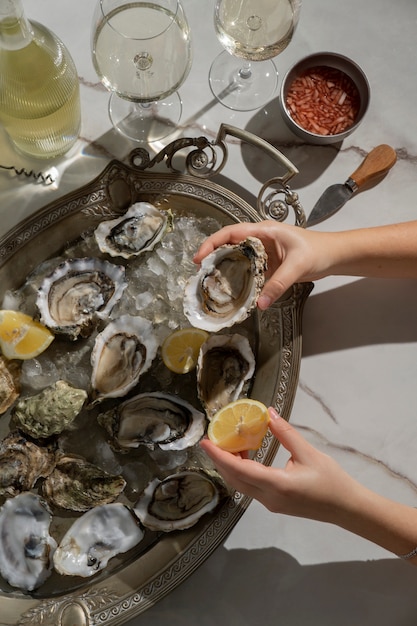
Paxos, the smallest of the Ionian islands in Greece, is a place where most visitors come to do nothing but relax. The island offers stunning views, crystal-clear turquoise waters, delicious food, and a chance to unwind with friends and family. I stayed at the luxurious Villa Glaros, but if you feel like exploring, here are some things to do in Paxos.
When you arrive in Paxos, your first stop is likely to be Gaios, the island’s capital. This charming town is located on the sheltered eastern side of the island, protected by the islands of Agios Nikolaos and Panagia. The channel between them creates an extended waterfront perfect for yachts. You can enjoy a great view of the channel from the road leading from the New Port where the ferries arrive. If you arrive by ferry and don’t have transport, you can take a pleasant 15-minute walk along the channel, which might take longer if you stop to admire the colorful fishing boats and sleek yachts. The waterfront is lined with bars and restaurants, making it a great place for a stroll.
Gaios is full of narrow streets and pedestrianized areas with plenty of cafes and restaurants. The town is adorned with beautiful bougainvillea, and you’ll find picturesque views around every corner. The small folk museum on the harbor front, housed in an old school building, showcases artifacts found on Paxos and rooms furnished in local style. You might also come across the pretty bell tower and archway of the church of Agia Triada.
The main square in Gaios is the hub of activity, featuring the much-photographed Analipsi Church with its imposing bell tower. Surrounded by cafes and restaurants, it’s a great spot to watch the world go by. The square overlooks the busiest part of the harbor, where many island tour boats start. It’s a good place to inquire about boat trips.
Along the harbor front, you’ll find the statue of Georgios Anemogiannis, a hero of the Greek war of independence against the Ottoman Empire. Born in Paxos, he was a skipper of a fire ship that attacked Ottoman ships and was later executed. The statue, erected in 1966, welcomes yachts into the sheltered harbor of Gaios.
Gaios also has plenty of small souvenir shops and galleries. I visited a glass gallery where the owner makes colorful stained glass objects. I also found designer accessories at the Koo Concept Store on the waterfront, featuring the work of Greek designers.
There are many places to eat in Gaios, especially on the main square and along the waterfront. We had a great dinner at Carnayo, a taverna set a few blocks back from the water. The restaurant, run by chef-owner Spyros Tranakas, offers a contemporary twist on local Greek dishes. On a Friday night, we tried the Greek tasting buffet, which allowed us to sample a variety of local dishes. The buffet included salad plates, hot vegetable dishes, and BBQ meats. For dessert, we enjoyed Loukoumades, tiny deep-fried doughnuts soaked in honey and sprinkled with sesame seeds.
If you’re looking for a luxurious place to stay, Villa Glaros is the ultimate retreat. Set on a hillside with seven bedrooms, a swimming pool, a tennis court, and mesmerizing ocean views, the villa offers the services of a concierge and private chef. The stone-built villa is stylish and luxurious, filled with the owner’s personal collection of artworks and sculptures. Each bedroom has a marble en suite bathroom, finest quality bed linen, hardwood floors, luxurious detailing, and colorful artworks. The villa also features a long pool with a sunbathing terrace, a shaded dining area, a gym, and a secluded beach with kayaks and paddleboards.
A 15-minute drive north from Gaios will take you to Loggos, one of the three main towns on the island. Like Gaios, Loggos has Venetian-style houses clustered around the harbor. The town’s pedestrianized narrow streets, small squares, and views of the boats are its main attractions. We had lunch at Vassilis, a family-run restaurant with a prime position on the harbor front. The restaurant offers Greek and Mediterranean-inspired dishes and plenty of seafood. After lunch, we wandered around the harbor and visited a bakery with a tempting array of sweet pastries, ice creams, and traditional Greek nougat.
The east coast of Paxos is the sheltered side of the island, with plenty of lovely pebble beaches. On our boat trip around the island, we saw many beaches along the east coast, including Kipos, Marmari, Levrechio, Orkos, Lakkos, and Monodendri. Monodendri is a favorite beach with the well-known Ben’s Bar, a stylish beach bar where you can rent sunbeds and water sports.
Continuing north, you’ll reach Lakka, the third town on Paxos. Set around a beautiful bay with crystal turquoise water, Lakka is a favorite spot for yachts. The town has plenty of restaurants clustered around the waterfront. We had lunch at the Fanis Bar, which has a prime position surrounded by water. On another day, we ate at the excellent fish restaurant La Rosa di Paxos, which displays the catch of the day in an ice cabinet. From Lakka town, you can walk around the edge of the bay to reach Lakka Beach, a long pebble beach with a beach bar.
On the headland to the west of Lakka Bay is the Faros or Lighthouse, built in 1919. Although you can’t go inside the walled enclosure, you can see the lighthouse from outside the gates. Close to the lighthouse, you can walk down to Plani beach, a secluded pebble beach with rocks that are great for snorkeling.
Another lovely beach we visited is Mongonissi in the southeast of Paxos. The beach is sandy and popular with families. We had lunch at the Mongonissi Beach Bar, which overlooks the beach. On another occasion, we stopped at the Carnayo Gold Restaurant during our boat trip around the island.
Taking a boat trip around Paxos is a must-do activity. You can hire your own boat or join a group boat tour. Our boat trip took us along the sheltered eastern coast and the wilder west coast, with its stunning cliffs and sea caves. The blue caves are a highlight, with the clearest and bluest water. You can also see the Tripitos arch, a sea arch that you can walk across.
Another beautiful beach along the west coast is Erimitis beach. The cliffs here rise sheer and rugged from the water. We parked at the Erimitis Restaurant and walked down to the beach. The restaurant is a great spot to watch the sunset.
Antipaxos, the smaller sister island to Paxos, is a 20-30 minute boat ride away. The island is known for its impossibly turquoise water and sandy beaches. Most people visit Vrika beach, which has a beach restaurant. Mesovrika and Voutoumi are other beautiful beaches on Antipaxos.
To reach Paxos, most people travel via Corfu, which offers flights from many international destinations. From Corfu, you can take a ferry to Paxos. Kamelia Lines and Ilida II operate ferry services between Corfu and Paxos. It’s recommended to make an advance reservation during high season.
If you’re staying at Villa Glaros, you’ll be met by the villa team at Paxos New Port. Alternatively, you can arrange a taxi or transfer. For drivers on the Greek mainland, you can take a ferry from Igoumenitsa to Paxos.
Paxos is a beautiful island with plenty to offer, from relaxing on the beach to exploring charming towns and enjoying delicious food. Whether you’re staying at a luxurious villa or taking a boat trip around the island, Paxos is the perfect place to unwind and enjoy the beauty of Greece.









